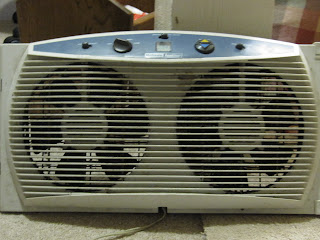 By this time next year, a solar photovoltaic (pv) system will be producing more than 100 percent of our electricity; I’ll be wondering by what miracle did this happen? I’ll forget what prompted me to get a solar site assessment. I’ll forget quizzing exhibitors at the Green Expo. Solar home tours... huddled in basements getting the lowdown on utility meters that spin backwards...staring up at rooftops... these memories will have faded. When did Brian and I actually agree to pursue this? Was it on the ride home from the Midwest Renewable Energy Fair in Wisconsin a couple of years ago? When did I start imagining myself as a power producer? Was it during my Energy Committee days?
By this time next year, a solar photovoltaic (pv) system will be producing more than 100 percent of our electricity; I’ll be wondering by what miracle did this happen? I’ll forget what prompted me to get a solar site assessment. I’ll forget quizzing exhibitors at the Green Expo. Solar home tours... huddled in basements getting the lowdown on utility meters that spin backwards...staring up at rooftops... these memories will have faded. When did Brian and I actually agree to pursue this? Was it on the ride home from the Midwest Renewable Energy Fair in Wisconsin a couple of years ago? When did I start imagining myself as a power producer? Was it during my Energy Committee days? Once the installation is complete, people will have questions for us as they begin to imagine themselves as power producers too. How big is the system? Why did you go with Sanyo? Why micro-inverters? How much did it cost? That's a big one. Some of them might actually be interested in seeing the spreadsheet I designed to help us sort through the various proposals. It was a headache. But, somehow we are on the other side of a big decision and that feels pretty good.
How can you put yourself on the path to solar pv ownership?
Talk directly with homeowners who have already made the leap. Check out the American Solar Energy Society for details about their annual solar tour www.ases.org. If you can't wait for the tour, be bold. Knock on someone's door. Ask them about their pv system.
Get a solar site assessment. Put it on the calendar this week. The +-200 dollars it costs for an assessment and a design proposal (see ours pictured above) supports local jobs and a solar industry (a cool thing), can inspire you to take another step toward being a power producer, and is counted toward the cost of a system should you make a purchase (check with individual vendors on that one). Personally, I think a solar site assessment would be a lovely Christmas gift for anyone who is dancing with the idea. In Minnesota, see www.mn.gov/commerce/energy/topics/clean-energy/Solar.jsp for accredited vendors. Elsewhere, start with your state’s commerce or energy department websites. Stick your toe in the pool. Get an assessment.
Check out available federal and state solar rebates: www.dsireusa.org.
Take a step. Then see what happens.
















